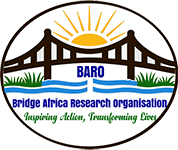The proliferation of digital technologies has revolutionized the way we consume and disseminate information. Social media platforms, online news outlets, and blogs have created an ecosystem where information can spread rapidly, often without adequate scrutiny. While this has opened up unprecedented opportunities for global communication and knowledge sharing, it also poses significant risks. The spread of misinformation, in particular, has emerged as a major concern, with far-reaching consequences for individuals, communities, and society as a whole.
In this context, the importance of verification cannot be overstated. Verifying the accuracy of information before sharing it online is a critical step in mitigating the spread of misinformation. This requires a combination of critical thinking, media literacy, and a commitment to fact-based communication.
The Consequences of Misinformation
Misinformation can have serious consequences, ranging from the erosion of trust in institutions and the media to the perpetuation of harmful stereotypes and the exacerbation of social conflicts. In extreme cases, misinformation can even lead to physical harm, as seen in instances of mob violence sparked by false rumors or conspiracy theories.
Furthermore, misinformation can also have significant economic and social impacts. For instance, false information about a company or product can lead to financial losses and damage to reputation. Similarly, misinformation about health issues can lead to unnecessary panic, misdiagnosis, and mistreatment.
The Role of Verification in Mitigating Misinformation
Verification is a critical step in mitigating the spread of misinformation. By taking the time to fact-check and verify the accuracy of information, individuals can help prevent the spread of false or misleading information. This requires a range of skills, including critical thinking, media literacy, and a commitment to fact-based communication.
Effective verification involves several key steps, including:
- Checking the source: Is the information coming from a reputable news outlet, academic journal, or government website?
- Looking for corroboration: Can you find similar information from other credible sources?
- Evaluating the evidence: Is the information based on credible research, data, or expert opinion?
- Considering the context: Is the information relevant to the current situation, or is it outdated or taken out of context?
Individual and Collective Responsibility
Mitigating the spread of misinformation requires a collective effort. Individuals, organizations, and governments all have a role to play in promoting fact-based communication and verifying the accuracy of information.
Individuals can take several steps to promote verification and mitigate the spread of misinformation, including:
- Being cautious of emotional appeals: Misinformation often relies on emotional manipulation rather than facts.
- Using fact-checking websites: Resources like Snopes, (link unavailable), and Africa Check can help verify the accuracy of information.
- Promoting media literacy: Encourage others to think critically about the information they consume online.
Organizations and governments can also play a critical role in promoting verification and mitigating the spread of misinformation. This can involve:
- Investing in fact-checking initiatives: Supporting independent fact-checking organizations and initiatives can help promote fact-based communication.
- Promoting media literacy: Encouraging media literacy programs and initiatives can help individuals develop the skills they need to critically evaluate online information.
- Developing and enforcing policies: Establishing and enforcing policies to prevent the spread of misinformation can help mitigate its impact.
Conclusion
The spread of misinformation is a complex and multifaceted issue that requires a collective effort to mitigate. Verification is a critical step in this process, and individuals, organizations, and governments all have a role to play in promoting fact-based communication. By working together, we can create a safer, more informed online community that promotes critical thinking, media literacy, and fact-based communication.

